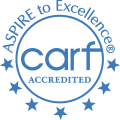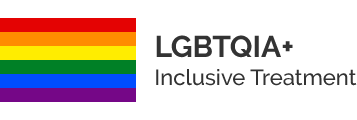Heroin addiction can often times be hidden in plain sight, making it difficult to identify. Understanding and recognizing the signs, symptoms, risks and more is the first step in the recovery journey.
Understanding Heroin Addiction
Learn about heroin addiction
Heroin is an opiate narcotic, a class of drugs naturally derived from the flowers of the opium poppy or a synthetic substitute. Known colloquially as “H,” “smack,” “horse,” or “tar,” the illegal type of heroin is sold by dealers on the streets. In medical settings, heroin is called “diamorphine” and occasionally used to treat severe pain. While the risk for death and overdose are often touted as the reasons why a person should not do heroin, it’s important to understand these reasons. Dealers often cut their heroin with substances to maximize profits. These substances used to cut the heroin may include baby powder, talcum, or cornstarch. As an individual purchasing smack on the street is unable to ascertain the purity of the drug, they have absolutely no way of knowing exactly what is being injected. A more pure dose of heroin to someone who is accustomed to a less pure version, can – and does – often lead to accidental overdose and death.
Heroin can be abused in any number of manners depending upon the purity of the drug and the individual user’s preference. Heroin is often mainlined, or directly injected into a vein, injected into the muscle (IM injection), smoked through a water pipe, mixed with marijuana in a joint, snorted, or inhaled as smoke through a straw – also known as “chasing the dragon.” Short-term effects of heroin appear quickly after the illegal drug is used and last for several hours. Injecting heroin produces what users call a “rush,” a surge of euphoria accompanied by a warm flushing of the skin, dry mouth, and a heaviness in the arms and legs. After the initial euphoria passes, the individual goes “on the nod,” which is an alternating state of wakefulness and drowsiness. Mental clarity and functioning become cloudy due to central nervous system depression, and the user appears to be intoxicated.
Heroin addiction can be treated and people who have been struggling with this addiction for many years can get better. The right combination of medication, detox, rehab, and therapies can allow individuals who are addicted to heroin go on to lead happy, healthy, and sober lives.
Statistics
Heroin addiction statistics
In 2011, 4.2 million Americans over the age of 12 (or 1.6 percent of the population) had used smack at least once in their lifetime. It has been estimated that approximately 23% of individuals who use heroin later do become dependent upon and addicted to smack.
Causes and Risk Factors
Causes and risk factors for heroin addiction
The precise cause for heroin addiction is unknown. Addiction is generally thought to be the result of a number of factors working together. These factors may include:
Genetic: Individuals who have a first-degree relative who struggles with addiction to heroin or other substances are at a higher risk for developing addiction later in life.
Brain Chemistry: As heroin causes the release of pleasurable neurotransmitters in the brain, individuals who have a deficiency in these neurotransmitters may seek out heroin or other opiates in order to feel sensations of pleasure.
Environmental: People who are raised in an environment in which close relatives or caregivers openly abuse drugs are at a higher risk for developing an addiction later in life. Additionally, those who begin to abuse substances such as heroin or marijuana at an early age are at a higher risk for developing addiction down the road.
Psychological: Many mental illnesses exist for years without proper diagnosis or treatment. Individuals struggling with certain types of mental illnesses may use heroin as a means to control some of the unpleasant symptoms of the mental illness.
Signs and Symptoms
Signs and symptoms of heroin addiction
The symptoms of heroin abuse will vary among individuals based upon their genetic makeup, length of use, frequency of use, and amount of use. Common symptoms of heroin abuse include the following:
Mood symptoms:
- Depression
- Mood swings
- Anxiety
- Irritability
- Euphoria
Behavioral symptoms:
- Lying to cover up heroin use
- Going “on the nod” – a wakeful and drowsy state
- Hiding heroin in a number of places around the home
- Sudden need for money
- Problems with the law
- Increasing social isolation
- Inability to fulfill obligations at work, home, or school
- Loss of interest in once-pleasurable activities
- Drug paraphernalia around the home
- Increased risky behavior
- Increased libido
- Warm flushing of the skin
- Decreased respiration rate
- Increased lung infections
- Dry mouth
- Heaviness in extremities
- Slowed speech
- Slow, unsteady gait
- Constricted pupils
- Drooping of eyelids
- Nausea and vomiting
- Constipation
- Physical dependence
Physical symptoms:
- Clouded mental function
- Slurred speech
- Wearing long sleeves to hide track marks
- Addiction
- Tolerance
Psychological symptoms:
- Impulsive behaviors
- Withdrawal symptoms
- Hallucinations
- Delusions
- Psychosis
Effects
Effects of heroin addiction
The effects of heroin abuse can lead to complications in virtually every area of an individual’s life leaving nothing untouched. The effects of heroin abuse will vary depending upon length of usage, amount used, purity of the substance, prior risk-taking behaviors, and individual genetic makeup.
Common effects of chronic heroin abuse may include:
- Collapsed veins
- Pericarditis
- Infection of heart valves
- Liver disease
- Lung disease
- Pneumonia
- Cellulitis
- Abscesses at injection sites
- Strokes
- Heart attacks
- Seizures
- Suicide
- Accidental overdose
- Death
Withdrawal Effects
Withdrawal effects of heroin addiction
As an individual who abuses heroin requires higher and higher doses to become intoxicated, physical dependence and heroin addiction develop. When an individual becomes physically dependent upon heroin, they will experience withdrawal symptoms when the drug use is ceased or cut back dramatically. Withdrawal symptoms tend to appear within a few hours after the last dosage and peak within 48 to 72 hours after the last dosage. It’s important for individuals who are struggling to kick heroin usage to do so in a medically-monitored treatment program to prevent and treat any dangerous side effects.
Withdrawal symptoms from heroin include:
- Strong drug cravings
- Restlessness
- Muscle and bone pain
- Insomnia
- Diarrhea and vomiting
- Cold flashes with goose bumps (“cold turkey”)
- Involuntary kicking movements (“kicking the habit”)
- Death – in chronic abusers who are in poor health
Co-Occurring Disorders
Heroin addiction and co-occurring disorders
Individuals who struggle with heroin addiction often have co-occurring mental illnesses. The most common co-occurring disorders include:
- Depressive disorders
- Anxiety disorders
- Bipolar disorder
- Other substance abuse






